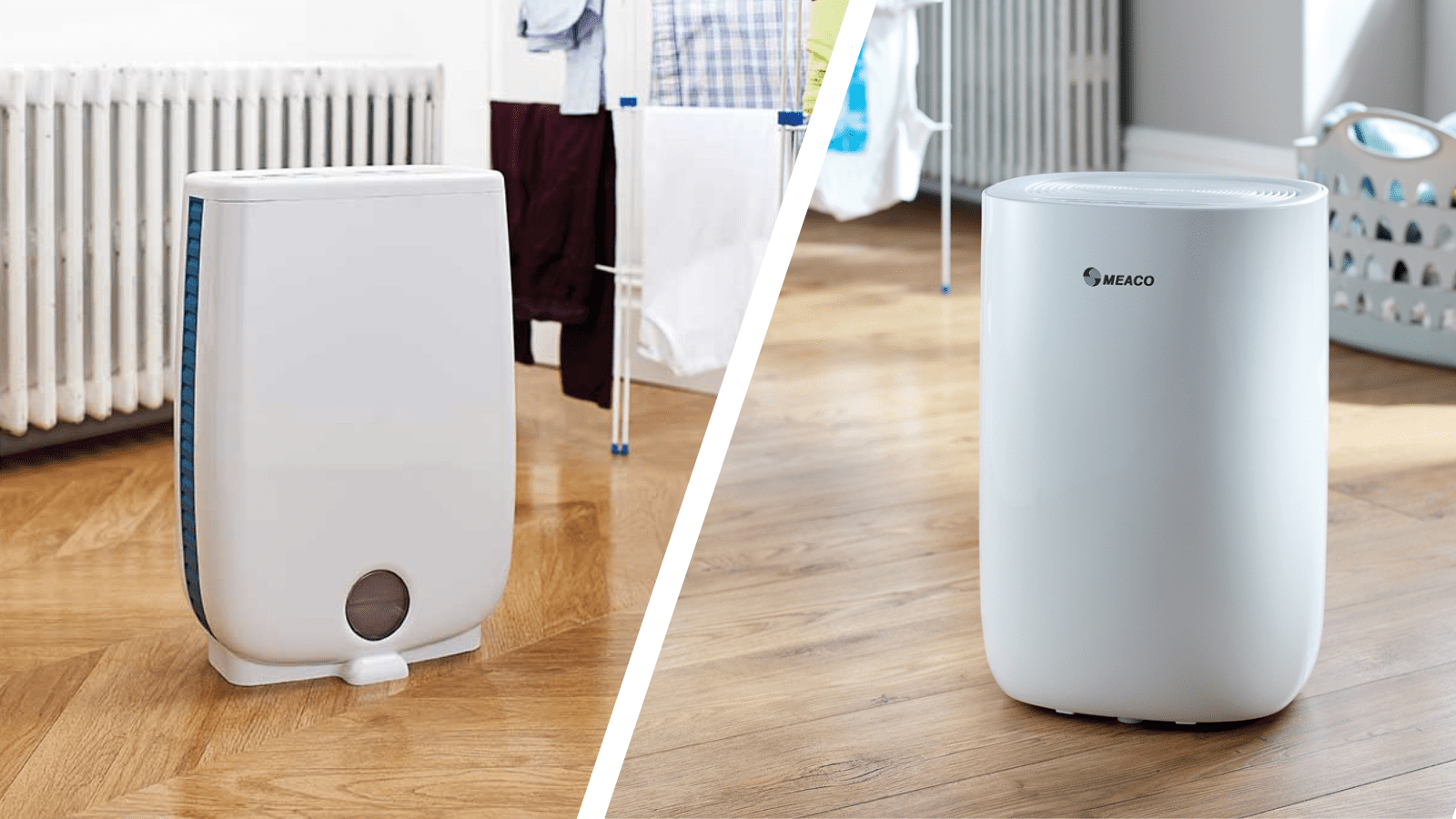
Selecting the right dehumidifier is a minefield for many people as brands send out conflicting information trying to persuade consumers to buy. Do you need a desiccant dehumidifier or a compressor model? Our sales are fairly even between the two technologies which puts us in an unique situation to provide unbiased advice.
There are two types of dehumidifiers: desiccant and compressor. At Meaco, we manufacture and sell an equal amount of both types of technologies, so we are uniquely placed to give unbiased advice on which would be best for your needs. Both types of appliance will help prevent mould and damp by extracting water.
Because there are two different types of dehumidifier technology on the market, confusion comes when someone has to decide which one to buy. Below is a cut-and-keep guide to making the right choice.
Generally speaking, a compressor dehumidifier is suitable for a room with an air temperature above 10°C, and a desiccant dehumidifier is more suited for temperatures below 10°C.
So, there are 6 key factors which may help you decide whether a desiccant or compressor dehumidifier suits you best:
- What is the temperature of the space you want to use your dehumidifier?
- Will a dehumidifier keep the room warm and dry?
- Can a dehumidifier dry laundry?
- How much does a dehumidifier weigh and how easy is it to move around?
- How much does a dehumidifier cost to run?
- And how much noise does a dehumidifier generate?
Compressor dehumidifiers are the established way of doing things having been around for 50+ years. They work by creating a cold surface and when the warm, damp air from within the room comes into contact with the cold surface, condensation forms, and the water is removed from the air. Jump to the comparison table.
A desiccant dehumidifier has no compressor and does not use a cold surface to extract the excess moisture from the air. Instead, it has a desiccant wheel that absorbs the moisture from the air, in a similar way to a sponge. The desiccant is regenerated by an internal heater and fan so that the process can be repeated time and time again. Jump to the comparison table.
Main applications to consider when choosing between dehumidifier types:
Which type of dehumidifier is best for cold or cooler conditions (temperature is below 10°C)? When the room air temperature is likely to fall below 10°C, for example in a conservatory, garage or colder home, a desiccant dehumidifier is the most suitable type. This is because, desiccant dehumidifiers maintain a consistent performance, regardless of the surrounding temperature.
Compressor dehumidifiers, on the other hand, need the inside of the machine to be colder than the air within the room in order for it to perform correctly. So, the colder the room, the harder the dehumidifier has to work to create that cold surface. As the temperature starts to fall down towards 10°C, the chances are that the inside of the dehumidifier will get close to freezing, increasing the chances of ice forming on the dehumidifier’s cooling coils. Below 10°C, compressor dehumidifiers are programmed to spend more and more of their time defrosting themselves rather than dehumidifying.

Pictured: Desiccant dehumidifiers are recommended for cold rooms although the MeacoDry Arete® One compressor dehumidifier also works well.
As a rule of thumb we would always recommend a desiccant dehumidifier if the room temperature is below 10°C, a desiccant dehumidifier or a large compressor dehumidifier (either a 20L or 25L) if the room temperature is between 10°C and 15°C and any type of dehumidifier, including a small compressor dehumidifier (10L or 12L), if the room temperature is above 15°C.
Below 10°C: desiccant dehumidifier only
Between 10°C and 15°C: desiccant dehumidifier or a large compressor dehumidifier (20L or 25L)
Above 15°C: desiccant dehumidifier or any size compressor dehumidifier (10L, 12L, 20L or 25L)
Small compressor dehumidifiers used in rooms below 15°C and large compressor dehumidifiers used in rooms below 10°C will not perform well. Having said that, you will see that both of the larger MeacoDry Arete® One dehumidifiers are Which? Best Buys and in their reviews found that they both performed better than expected at 10°C and that the 25L model was exceptional. Desiccant dehumidifiers (such as the Meaco DD8L) will perform the same regardless of the room temperature.
Desiccant dehumidifiers are recommended for cold rooms although the Arete® One 20L and 25L compressor dehumidifiers also work well, as you can see here in the classic car garage.
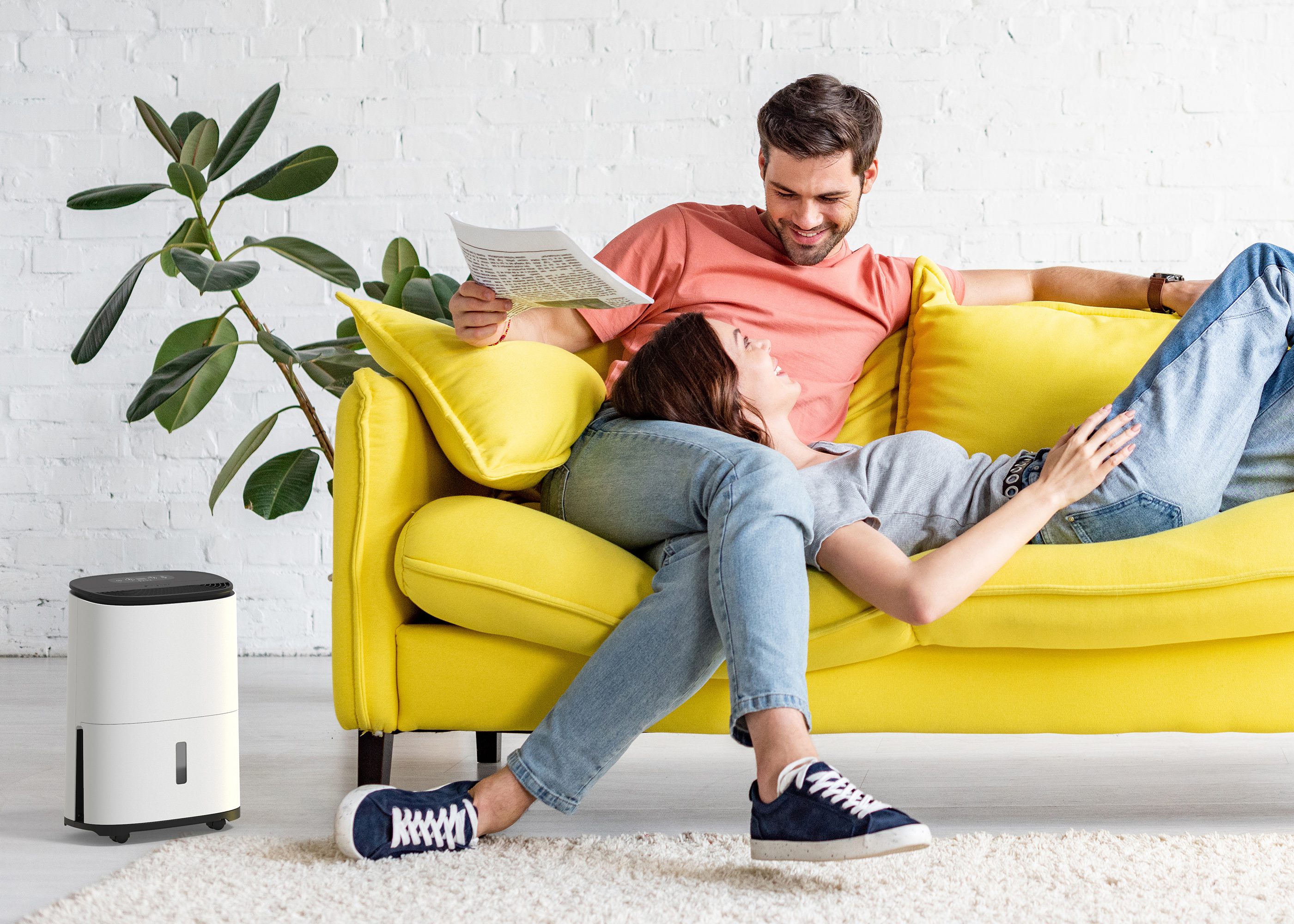
Which type of dehumidifier is best to keep your house warm and dry?
Most customers are looking for a dehumidifier to keep their home condensation free. Or to tackle the problem of too much humidity in the air causing damp and mould. They need a dehumidifier that will take excess moisture out of the air, and some also like it to warm up the room where it’s operating.
Both compressor and desiccant dehumidifiers will warm the air up slightly – the air naturally warms up as it passes through the dehumidifier. The air coming out of the compressor dehumidifier will be about 2°C warmer. This will not warm up the room the dehumidifier is being used in (and will actually feel cold to touch! This is because the air is moving). However,the air coming out of a desiccant dehumidifier will be about 10-12°C warmer and will have a significant impact on the temperature of the room its being used in – think of it as a 2 in 1 dehumidifier and heater!
So, if you are putting the dehumidifier into a hallway that is on the chilly side, the desiccant dehumidifier makes sense. If the hallway is already nice and toasty then the compressor dehumidifier is the correct option.
So, for a cold room – the winner is desiccant. For a warm room – the winner is compressor.
Is a desiccant dehumidifier good for drying laundry?
Drying washing indoors is one of the most common reasons why homes suffer from condensation, damp and mould. Laundry dries because the air around it is drier than itself. So the washing gives up the moisture in order to be in equilibrium with its surroundings. However, the moisture from the laundry has to go somewhere and this leads to condensation, damp and mould. Using a dehumidifier not only creates a dry atmosphere and blows air across the wet washing speeding up its drying time, it also captures the excess moisture from the clothes and prevents it from causing problems in your house such as condensation, damp or mould.
Drying washing using a dehumidifier works in the same way as drying the laundry on a line in the summer – honest! The laundry dries fastest outside on a dry, warm, windy day. And the laundry inside will dry faster if the warm, dry air created by the dehumidifier hits the clothes.
Both desiccant and compressor dehumidifiers are good at drying laundry. A desiccant dehumidifier tends to have a larger top speed air flow than a compressor dehumidifier and the air coming out of the dehumidifier is warmer (giving it that extra edge).
The DD8L Zambezi has a unique low energy drying cycle for laundry which makes it the best desiccant for drying laundry, as well as a lourve which directs the airflow onto the clothes. Although compressor dehumidifiers don’t have the additional heat they are cheaper to run and therefore can dry a load of laundry at less of a cost than a desiccant. Many compress dehumidifiers, including our MeacoDry Arete® One range, have dedicated laundry modes to dry your laundry in 6 hours.
For drying washing, the winners are the DD8L Zambezi and for low cost drying the MeacoDry Arete® One range.
Pictured: Desiccant dehumidifiers can be used to dry washing cost-effectively.
Product features to consider before purchasing:
Planning on moving the dehumidifier around the house? You’ll need to know which weighs less, a desiccant or compressor dehumidifier.
However, there may be times when you want to move the dehumidifier around. For example, you might have built-in wardrobes in a bedroom that are prone to mould growth. You might have the dehumidifier upstairs on the landing but need to move it downstairs to dry the washing, or you might like to move it into a conservatory now and again or use it to dry out a poorly ventilated bathroom.
Compressors add about 6 kilograms to the weight of a dehumidifier, so carrying a desiccant dehumidifier around is a lot easier than carrying a compressor dehumidifier around. However, most compressor dehumidifiers come with castors, making them more portable.
Carrying your dehumidifier – the winner is desiccant.
Energy Consumption – how much does a dehumidifier cost to run?
Customers are understandably interested in how much it costs to run a dehumidifier. Compressor dehumidifiers are in general cheaper to run. However, a desiccant releases its extra energy as heat. So there will be a cost to run your dehumidifier, but you are getting heat back into your home, meaning you can reduce your central heating accordingly. And that has a positive knock-on effect on your bills. You have to decide if you want or need this additional warmth or if you just want the cheapest dehumidifier to run.
For example, in our compressor range, we have the Meaco Low Energy 12L Dehumidifier, running at just 4p / kWh as well as our MeacoDry ABC 12L, running at just 4p / hour based on 24.50p / kWh. That means, you can have the dehumidifier on 24 hours a day, maintaining your home humidity levels for just 96p per day.
So, for low energy and low cost operation – the winner is compressor dehumidifiers.
The good thing is, whichever dehumidifier you choose, a compressor or a desiccant, the dehumidifier will be removing cold, damp air from your home, meaning you don’t have to put your heating on as high – saving you money on your energy bills!
Noise levels – how much noise does a dehumidifier make?
This is an area where dehumidifiers have changed a lot over the past 5-10 years. It used to be the case that a desiccant dehumidifier on low fan speed was your quietest option, but a few years ago the MeacoDry ABC Range changed all of that with 10 and 12l models at just 36dB (close to the sound of a whisper). And then, we changed it again with the new Arete® One 10 and 12L compressor dehumidifiers which are even quieter at 35dB. So you can now buy a dehumidifier that is the quietest and cheapest to run.
For quiet operation, the winner is Meaco ABC 10L and 12L and MeacoDry Arete® One 10 and 12L Dehumidifier and Air Purifier. These dehumidifiers are all a whisper-quiet 35/36dB.
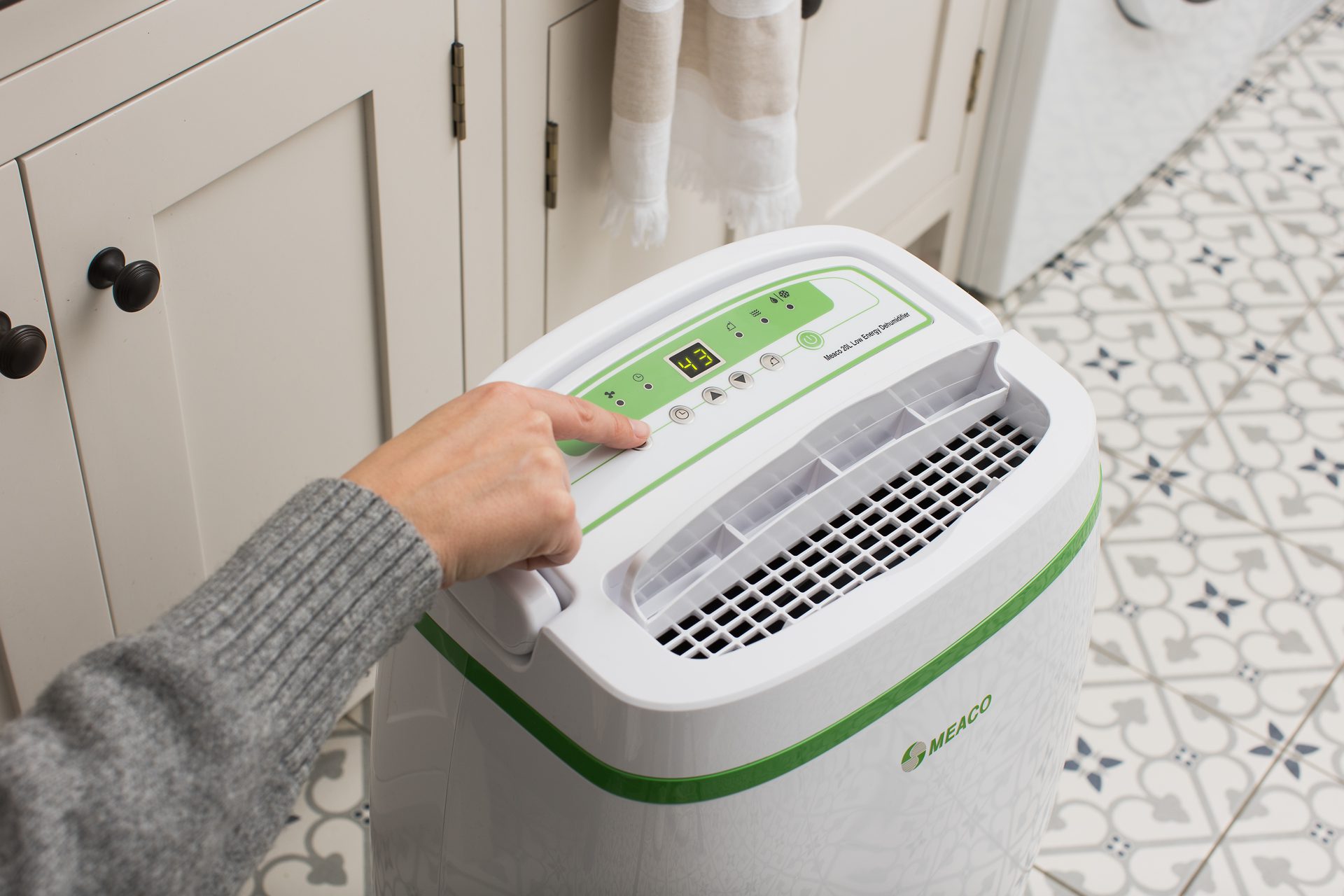
Which Dehumidifiers Can Do More Than Just Extract Moisture, Which Can Double Up As An Air Purifier As Well?
Many dehumidifiers can now be fitted with HEPA filters so they can purify the intake air as well as extracting moisture. At Meaco, we supply medical-grade H13 HEPA filters to selected compressor dehumidifiers. These can retain 99.75% particles as small as 0.3 micrometers in diameter, making it great for people with allergies like hayfever or other respiratory medical conditions such as asthma.
Because of the heat elements and sensitive parts of a desiccant dehumidifier, we do not supply things like HEPA filters. By putting anything which reduces the air intake onto the dehumidifier, we’re reducing its efficiency and can harm the machine. Equally, if things like sawdust from a garage/workshop got into the mechanics, you could be serving a short life sentence for your dehumidifier.
However, compressor dehumidifiers like the MeacoDry Arete® One and Meaco Low Energy range, are supplied with a H13 HEPA filter. It can be easily inserted into the dehumidifier turning it into a combined dehumidifier and air purifier. You can use this as much or as little as you want – the filter doesn’t have to be in the unit all the time, however when it is, the air in your home is being purified of dust, dirt, allergens, mould spores and VOCs! It’s important HEPA filters are replaced when they change colour from white to dark grey, this tends to be around every 3 months.

Let’s summarise the desiccants vs compressor dehumidifier debate, each is useful in different applications:
Desiccant
Compressor
Effective in which temperatures:
Desiccant:
Works well in all temperatures and are the recommend dehumidifier below 10°C
Compressor:
Only effective in spaces over 10°C, performs best at 16°C and above
Does it provide heat to the room?
Desiccant:
Yes, desiccants emit some additional warmth which can be useful
Compressor:
No, this does not provide additional heat
Are they effective when drying washing?
Desiccant:
Yes, actually optimal as they extract moisture and add warmth to drying laundry
Compressor:
Yes, these will successfully help you to dry washing indoors
Laundry mode available?
Desiccant:
Most Meaco dehumidifiers come with Laundry Modes. Check the technical specifications for more information.
Compressor:
Most Meaco dehumidifiers come with Laundry Modes. Check the technical specifications for more information.
Which is lighter in weight?
Desiccant:
Lightest and therefore easiest to move
Compressor:
The equivalent sized compressor dehumidifier will weigh an additional 6kg, however lots come with castors
Which has a cheaper cost to run?
Desiccant:
Desiccants are more expensive to run, our MeacoDry DD8L costs 9p / kWh
Compressor:
Compressors are cheaper as a general rule. Our MeacoDry Arete® One 10L costs just 4p / kWh
Which dehumidifier uses less electricity?
Desiccant:
Around 330 watts at 20°C and 60%rh
Compressor:
Between 150-260 watts depending on the size at 20°C and 60%rh
Which generates the lowest noise levels?
Desiccant:
Traditionally quieter, the 8L desiccants in our range are 39 dB
Compressor:
The latest ABC and Arete® dehumidifiers are Quiet Mark accredited, measuring 35dB and above.
Which has the longest lifespan?
Desiccant:
Lifespan is dependent on a lot of factors including the environment and how well the dehumidifier is looked after
Compressor:
Lifespan is dependent on a lot of factors including the environment and how well the compressor is looked after, however, our Arete® range is the only range to come with a free 5 year warranty
Which has the best sizing options?
Desiccant:
Because of the mechanics, desiccants only come in 8L however this is suitable from a 1 bed flat to a 5 bed house
Compressor:
Multiple sizes available for different sized houses
Which can clean the air as well as dehumidify?
Desiccant:
Dehumidify only
Compressor:
Our MeacoDry Arete® One and Meaco Low Energy range are combined dehumidifiers and air purifiers
Best application
Desiccant:
Lower temperatures or places you may want some extra warmth. For example, an unheated conservatory.
Compressor:
Applications over 10C. These are cheaper to run and available in more sizes. Great for home living.
You can see that it is not as simple as many dehumidifier brands make out when they claim that a desiccant dehumidifier – or a compressor dehumidifier is best. This is because they are normally biased towards one or other of the technologies. Hopefully the above will help – but if you are still not sure what’s best for you, give us a call on 01483 234900, email customerservice@meaco.com or comment below and we will be happy to talk it through with you.
Browse our ranges: Compressor Dehumidifiers, Desiccant Dehumidifiers
Products featured: Meaco ABC 12L , Arete® One 10 and 12L Dehumidifier and Air Purifier, Meaco DD8L, Meaco DD8L Zambezi, Meaco Low Energy Dehumidifier 12L



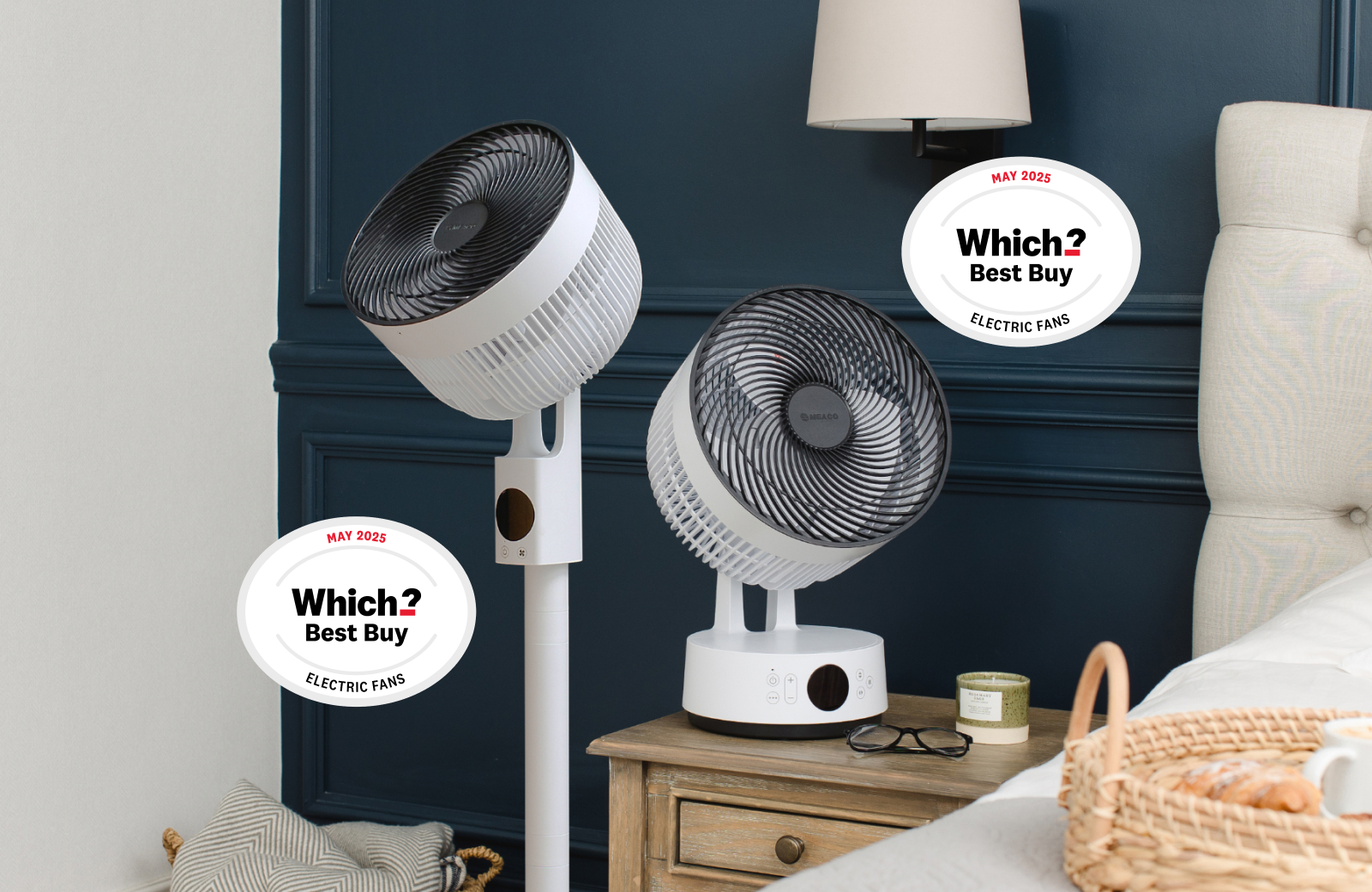
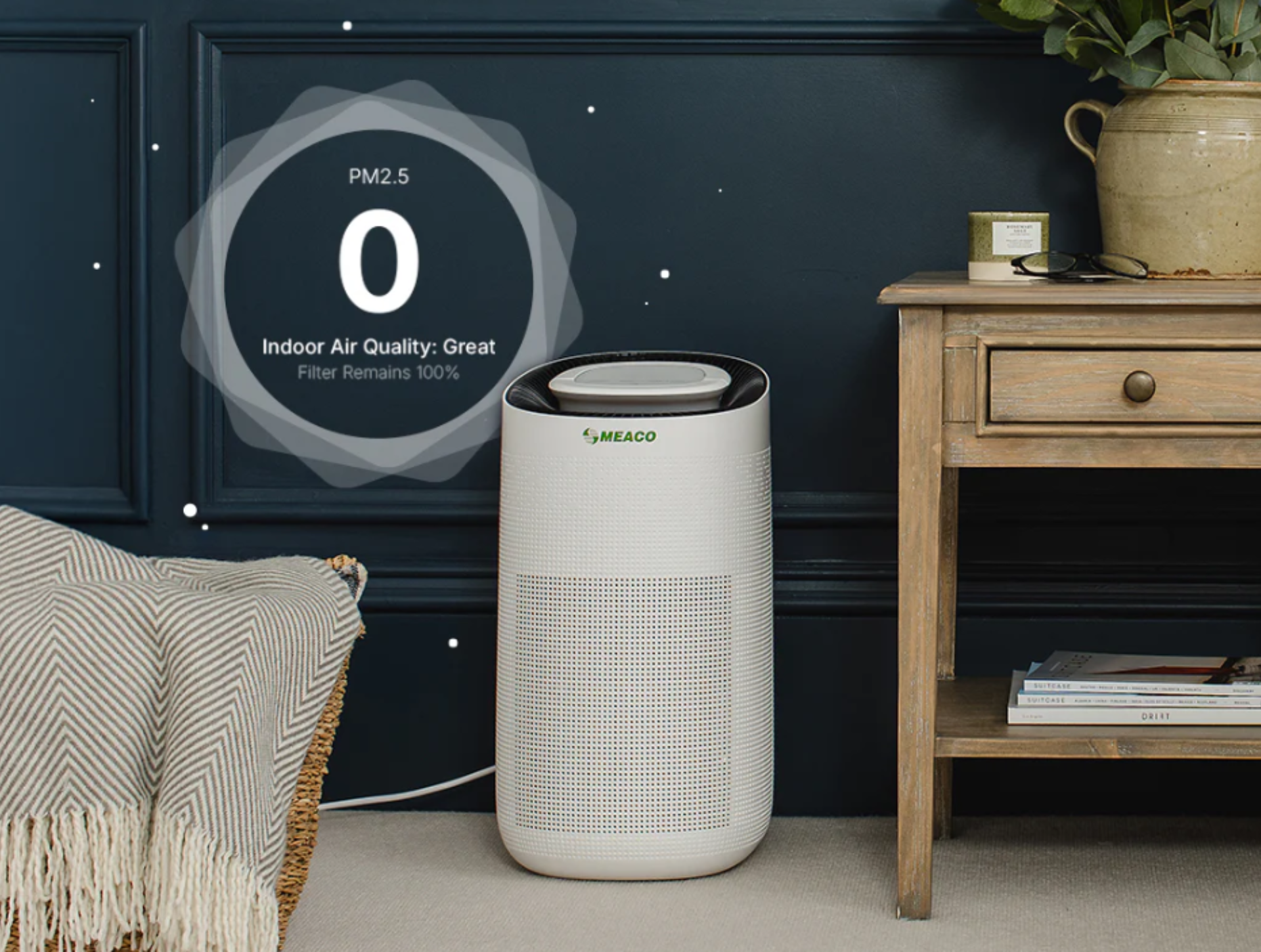



243 responses
I didn’t measure as such, I went roughly off the old listing for when I bought the house – the room is 9ft by 10 ft 1. Does that help at all?
That would give you just over 8m², so you would be ok on that basis.
Ok, that’s great, thank you, I will go ahead with the purchase 😊
Hi there. I’m after just a quick bit of advice. I’m looking for a dehumidifier which would primarily be used to help with clothes drying. It would be in a room roughly 3 metres square with the clothes airer and the door closed. The room is generally the warmest in the house even without the radiator on. It would only be turned on when the airer is full of wet clothes. It would however sometimes be moved to the landing after a few hot showers were taken in a row and the bathroom door left open (and maybe on the very odd occasion brought downstairs). Am I right in thinking the Meaco ABC 10 or 12 ltr range would be the best and economical for this? Many thanks.
One important thing to think about is if the room is 3 x 3m so actually 9m² then you are fine. If the room is actually 3m² then you cannot use any dehumidifier in there. It would be too small for any compressor dehumidifier because the safety regulations do not allow them to be used in spaces smaller than 4m². The alternative would be to use a desiccant dehumidifier but they would be no good because they would overheat and turn off in minutes.
If the room is 3 x 3m then the plan is fine.
Chris
Hi, we live in a 3 bedroom semi detached house. At the back of the house is a North facing porch and toilet that has a flat roof and single brick wall that suffers terribly with damp and mould especially in winter. The back kitchen door opens onto this area and when cooking the moisture goes straight into the porch/toilet if the door is opened. The porch/toilet gets very cold in winter, there is a small electric panel heater in there for winter which is expensive to run due to the lack of insulation. Would it be best to have a dessicant dehumidifier in the problem porch/toilet area or would a compressor type be better located in the kitchen as this is the source of a lot of the moisture?
Cheers
David,
I would use a desiccant dehumidifier like the Meaco DD8L and use it to intercept the moisture from the kitchen and to keep the toilet area warm and dry.
Chris
Thanks, Would it be best to put the dehumidifier in the porch or the toilet area? The worst of the damp / mould ends up in the toilet room ceiling . The moisture must travel from the kitchen then through the porch before reaching the back of the toilet room. I see a wall bracket can be bought for the DD8L. Would the dehumidifier work best on the floor or high up?
Cheers
David,
I would put it wherever is convenient and it will not be in the way. Some of the problem in the toilet area will be because of the moisture generated in there through washing hands and the toilet flush combined with the very low surface temperature of the external surfaces. Some extra insulation would help greatly. Wall mounting can be useful as long as there is at least 300mm clearence above the machine once mounted for the air to get out.
Chris
Thanks, would the DD8L or the DD8L Junior be best? I looked online but the size and specs are the same for both models??? I would have thought that the junior would be smaller? I am thinking of wall mounting it near the corner above and to the right of the toilet and running the drainage pipe straight into the sink.
The difference between the two is that the DD8L has an anti-bacterial filter and an ioniser.
Thanks again Chris, I have ordered the DD8L and some wall brackets ( the brackets were currently out of stock on the Meaco site but I managed to find some on ebay). I think I’m going to treat the cold porch/toilet area as an advantage rather than a problem and with the help from the DD8L that whole area will hopefully become a big dehumidifier with most of the moisture from the kitchen and house being drawn into there rather than going into the rest of the house.
I received the DD8L yesterday and running it over night has greatly reduced the humidity in the porch/toilet down from 99% to about 60% already and the walls and ceilings feel much drier. No condensation on the single glazed toilet window either now. It also gives off a nice bit of heat so hopefully I won’t need to use the electric panel heater this Winter. I should have bought a dehumidifier years ago.
Cheers.
Good to hear David, thank you for the feedback.
Hello 🙂
I live in Malta and there is a retailer selling Meaco Dehumidifiers. I want to buy one for my bedroom (40m2) that also has a bathroom next to it (10m2). Due to the high humidity in Malta (especially in Winter where it is around 70-80%), I have allergy symptoms in Winter. This is why I was thinking about buying the “Meaco 12L Low Energy Dehumidifier and Air Purifier” which seems to be the ideal solution for my needs in regards to size and functionality.
However, after some research I sadly realized that this type of dehumidifier (compressor) is not suitable for any temperature below 15 degrees. The problem is that in Malta the temperature is always very hot except between December and February. Therefore, most houses do not have heating because its not really necessary. However, during these 3 winter month, the temperature during the day is usually around 12-16 (and it is mostly sunny), while at night it can go down to 9-12 (rather chilly…).
The humidity in Malta is especially high in Winter (which causes my allergy symptoms only in Winter) and thus I am not sure if the “Meaco 12L Low Energy Dehumidifier and Air Purifier” is still the right choice or if I should go for a desiccant one. The desiccant one would be better in these 3 winter months also because it would produce some heat but it will not have an air purifier function and will be less useful in summer when it is over 30 degrees. On the other hand, in summer I do not have allergy symptoms and the humidity is lower anyway (and I can use also the AC) so the main usage would be between lets say October and April.
I hope you can help me with this difficult choice 🙂
Allan
Allan,
You are correct when you talk about 10 and 12L compressor dehumidifiers but the larger 20 and 25L models are fine down to 10°C for long periods of time and lower for short priods of time. So I would look at one of those from Crosscraft.
Chris
Hi Chris,
Thanks a lot. I was not aware of that. That would solve the problem 🙂
I saw on your webpage that from the model I like (Low Energy Dehumidifier and Air Purifier) there is also a 20L model. However, it is not listed on the crosscraft page of Malta. I will have to contact them and check if it could be ordered. I will visit their shop this week and ask about it. I think this is the perfect model for me.
By the way, its nice to see that you are still replying to comments to your informative blog post, even 9 years later it was published 🙂
Best Regards,
Allan
You are welcome. Crosscraft had a massive delivery today so they are all stocked up now.
Just to let you know that few days later I bought the “MeacoDry Arete® One 20L Dehumidifier / Air Purifier” and I am super happy with it! 🙂
Hi, just a little bit if advice please to check I’m getting the right one, I need it to give a bit of heat so thinking the dessicant one.
I’ll be also using it in my bathroom to get rid of moisture ( there are water droplets and damp patches on the ceiling even when the shower hasnt been running and the window is always open, also an extractor fan comes on with the light) and also dry washing on an airer. There are 5 of us in a large 3 bedroom house and our windows are dripping by the morning.
Thanks for your help, lisa x
One of the DD8L dehumidifiers will be fine for you. If you place it outside the bathroom door, and leave it open after you have finished showering, then it will keep the bathroom dry.
Hello Chris.
Sorry to bother you again, but I wonder if you might just clarify one other quick thing for me, please.
I took delivery of the Meaco 25L and it is doing a fantastic job.
I noted, however, that there is no ioniser button on it. I have seen some reviews where there is an ioniser button instead of a laundry button.
Would it be possible to clarify what the difference is, please?
Alex,
All dehumidifiers in Europe had to change to R290 gas at the start of 2020 by law. You cannot currently use ionisers with R290 and therefore it was removed at the end of 2019 on the 25L.
Hope that helps to explain.
Chris
Thanks Chris – I ended up going with the 25L and now awaiting delivery. Thanks again for your help – very much appreciated.
You are welcome.
Perfect. Thank you – just one more question if I may (promise!).
What is the benefit of Humidistat mode vs Auto Mode?
With the fan always running in Auto Mode, would this not be using more electricity or is there some other overall benefit over Humidistat Mode?
Auto Mode is used by people for two reasons. Firstly for those that want closer, more accurate control over their humidity and secondly by those that like the idea of pressing one button and then not thinking about their dehumidifier again and letting the machine make all of the decisions.
Thanks Chris.
I had to do a bit more reading on this, but I think I understand, now.
So the 25L has an identical Meaco Control Logic mode as well – it is just called Humdistat mode instead (i.e. the entire device will turn off and on, at regular intervals, to keep humidity at a certain level, but always at a fixed fan speed).
This is in contrast to auto mode, whereby the fan is always on but the fan speed will decrease/increase in conjunction with the compressor coming on and off to keep humidity at the desired level.
Is that correct?
Thanks for bearing with me on this.
Correct, you have it.
Forgot to say, what size would I need and are the heat controls only available by wifi? Thankyou lisax
Any of the DD8L models will be fine. there are no WiFi options on our machines, so nothing to worry about there. Heat is automatic when it dehumidifies.
Thanks very much, Chris.
I have been looking a bit more at the two models and am I correct in thinking that they have a slightly different auto mode? It seems that the 25L’s fan is always on, whereas the 20L is able to go to completely to sleep and only wake up for testing the air every 30 minutes?
The 25L can offer you either or technic while the 20L only has the Meaco Control logic that you describe.
Hi there.
I have a three bedroom bungalow with a bathroom that has no extractor fan in the bathroom.
Our thermostat is set to never let the temperature fall below 12C and, whilst we are in the house, the temperature is around 15C.
As temperatures are a bit lower than the average, I note that I shall need either the 20L or 25L?
Which of the two should I go for? Which one would be cheaper to run in the long run?
The reason I ask is that the 20L seems to be slightly cheaper to run but, with its slightly lessened rate of extraction, wouldn’t it be on more?
Thanks.
Alex,
You are correct in your short list, eitehr machine will be ok, you might prefer the Quiet Mode on the 25L because the property is not massive.
In terms of the cost per litree of water collected the 25L will work out cheaper. But there is not much in it and the 20L has the advantage of the HEPA filter to help clean the air.
Chris